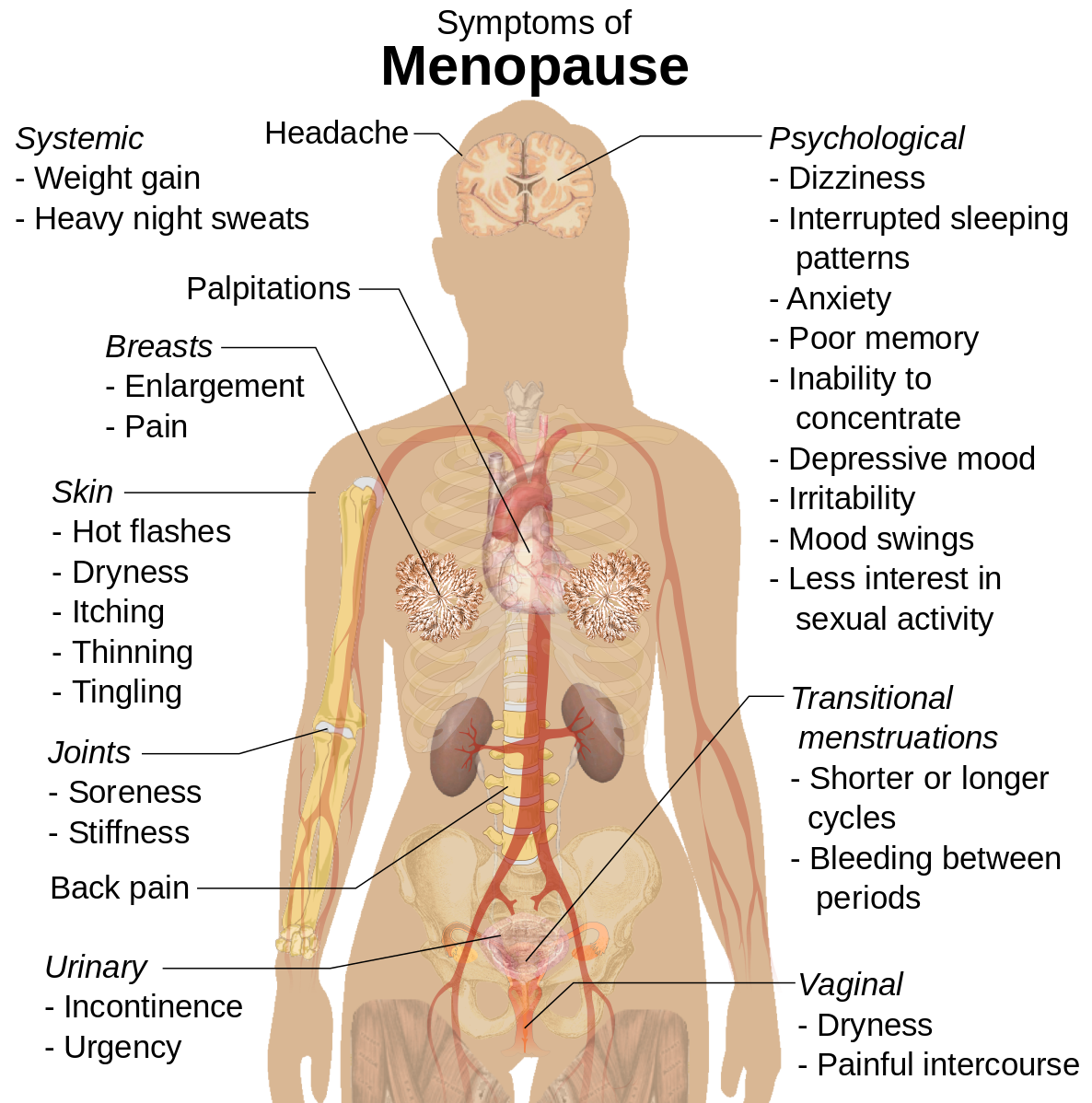Difference Between Menopause and Postmenopause
Menopause is the condition that starts 12 months after a woman experiences her last menstrual period. Pregnancy is the condition that starts when a woman is carrying an embryo or fetus.

What is Menopause?
Definition:
Menopause is the time of a woman’s life when menstruation ceases and usually is recognized as beginning when one year has passed since the last period occurs. Menopause typically starts about age 45 to 50 in most women.
Symptoms and signs:
Changes in hormone levels produce some marked symptoms such as difficulty sleeping, hot flushes, irritability, night sweats, and some atrophy of the vagina.
Diagnosis and causes:
A doctor can determine that a woman has entered menopause by measuring hormone levels and noting decreasing levels of estrogen, progesterone and follicle-stimulating hormone (FSH), and the antral follicle count is reduced. Antral follicles are the structures that contain the developing eggs in the ovary. This is associated with decreasing function of the ovaries due to natural aging or due to having had a hysterectomy with removal of the reproductive organs.
Treatment
For some women, hormone replacement therapy is a good option and it helps ease many of the symptoms associated with menopause. A doctor can prescribe estrogen and progesterone for women to replace the hormones that are diminishing in the body. Vaginal lubricants can be purchased to help with dryness.

What is Post Menopause?
Definition:
Post menopause is the time that occurs after the state of menopause has ended. It occurs on average at about age 55 or older. The exact age when the post menopause begins depends on when menopause ends, which does vary from woman to woman.
Symptoms and signs:
During post menopause there is generally a decrease in the severity of menopausal symptoms such as hot flashes and night sweats. Some symptoms, however, such as vaginal dryness may increase during the post menopause stage of a woman’s life.
Diagnosis and causes:
A doctor can diagnose the post-menopause state in a woman based on the lack of menstruation for longer than a year, and taking into account the decreasing severity of menopausal symptoms. In addition, the antral follicle count is found to be very low and FSH levels are also very low. Postmenopause is a natural consequence of aging and thus takes place in all women later in life.
Treatment:
No treatment is usually needed although hormone replacement therapy may be needed if symptoms such as hot flushes are still problematic. It is advisable that women in postmenopause do have bone density checks as the risk of osteoporosis is greatly increased during this time of life. To help prevent and treat osteoporosis, a woman may be prescribed a bisphosphonate medication such as Fosamax or Actonel.
Difference between Menopause and Post Menopause?
Definition
Menopause is the stage of a woman’s life when menstruation comes to an end. Postmenopause is the stage that occurs after menopause has ended.
Age
The age at which menopause usually begins is between 45 and 50 years old. The age at which postmenopause begins is on average 55 years but it depends when menopause ends.
Hormones
Estrogen, progesterone and FSH levels diminish and fluctuate in menopause. The same hormones are at very low but stable levels in post menopause.
Antral follicle count
The antral follicle count in menopause is low while it is very low in post menopause.
Uterus
The uterus starts to shrink during menopause. The uterus is very small by the time post menopause takes place.
Symptoms
The symptoms of menopause include vaginal dryness, hot flushes, night sweats, difficulty sleeping, and irritability. The symptoms of post menopause include increased vaginal atrophy and possibly a decrease in the hot flushes and night sweats.
Duration
Menopause can last from 7 to 10 years. Post menopause remains for the remainder of a woman’s life.
Osteoporosis
There is a slightly increased risk of developing osteoporosis during menopause. There is a greatly increased risk of developing osteoporosis during post menopause.
Treatment
Treatment of menopause most often takes the form of prescription hormone replacement pills. Treatment of post menopause sometimes includes hormone replacement pills as well as the addition of medications such as Fosamax to prevent and treat osteoporosis.
Table comparing Menopause and Post Menopause

Summary of Menopause Vs. Post Menopause
- Menopause and post menopause are both normal stages that occur during the lifetime of a woman.
- Both conditions represent a decrease in the female hormones of progesterone, estrogen and the hormone FSH.
- Menopause occurs before post menopause and it usually begins about 45 to 50 years of age.
- Post menopause occurs after menopause and often the symptoms of menopause are greatly decreased at this time.
- Post menopause does bring a very high risk of osteoporosis and thus many women take supplements or prescriptions to reduce the chances of having this illness.
- Difference Between Rumination and Regurgitation - June 13, 2024
- Difference Between Pyelectasis and Hydronephrosis - June 4, 2024
- Difference Between Cellulitis and Erysipelas - June 1, 2024
Search DifferenceBetween.net :
Leave a Response
References :
[0]Image credit: https://commons.wikimedia.org/wiki/File:Symptoms_of_menopause_(vector).svg
[1]Image credit: https://www.flickr.com/photos/libertasacademica/14799674566
[2]Greendale, Gail A., et al. "Symptom relief and side effects of postmenopausal hormones: results from the Postmenopausal Estrogen/Progestin Interventions Trial." Obstetrics & Gynecology 92.6 (1998): 982-988.
[3]Pinkerton, JoAnn V. “Menopause”. Merckmanuals. Merck & Co., 2018, https://www.msdmanuals.com/professional/gynecology-and-obstetrics/menopause/menopause
[4]Wend, Korinna, Peter Wend, and Susan A. Krum. "Tissue-specific effects of loss of estrogen during menopause and aging." Frontiers in endocrinology 3 (2012): 19.
